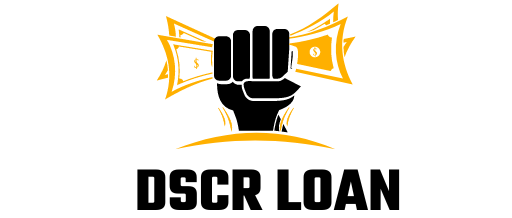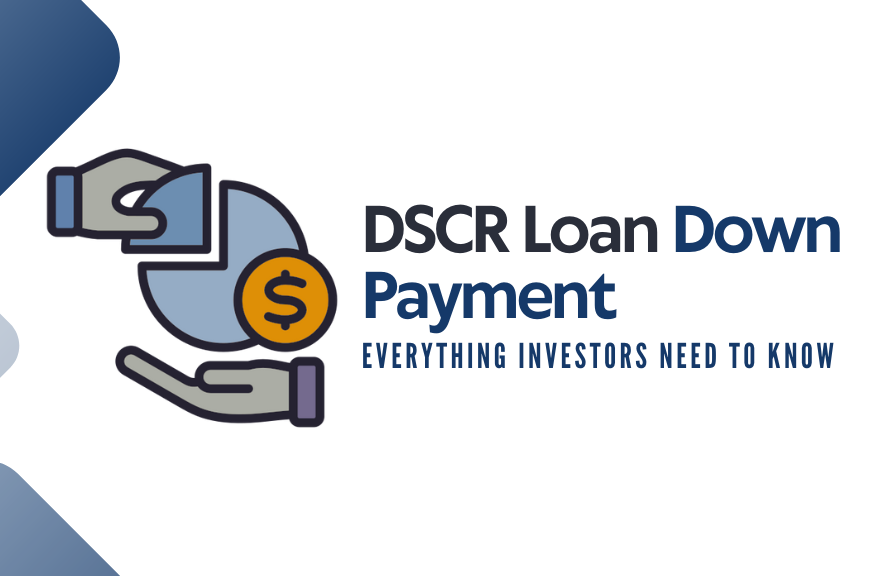When we talk about investing in real estate, one term that keeps coming to mind is the DSCR loan down payment. Debt Service Coverage Ratio (DSCR) loans are becoming more and more common among real estate investors, mostly those who are turning their attention to renting out businesses. It is important to know how much a down payment should be, as well as understand why it is so that you can get approved and make the most money from it. This article will explain what a DSCR loan is, down payments, and how they affect you.
Understanding DSCR Loans for Property Investors
DSCR loans are aimed at real estate investors and focus on the property’s ability to generate income rather than the borrower’s income. The loans rely on a key measurement called the DSCR, which lenders use to determine whether a property can meet its loan payments using its income.
The formula is simple:
DSCR = Net Operating Income / Debt Obligations
Most lenders prefer a DSCR of 1.2 or higher, which is typically used to indicate the amount of debt that the property itself can service without any problems. These loans are best suited for rental investors, including short-term rentals, long-term rentals, multi-family units, and commercial real estate. DSCR loans offer a scalable solution for acquiring increasingly large investor portfolios because the size of your portfolio is not based on eligibility in terms of property performance.
DSCR Loan Down Payment Requirements
Before entering the financial details, we should find out what the key characteristics of the borrower are that are considered to be at risk on a DSCR loan transaction. These are creditworthiness, the earning potential of the property, market conditions and the investor’s track record. These characteristics help determine the down payment.
Typical Down Payment Percentages
Most DSCR loans typically require a down payment of 20-25 per cent of the property purchase price. However, this is subject to the type of borrower, the location of the property, and any written requirements by the lender. Down payments can exceed 30 per cent in risky regions or markets where cash flow fluctuates.
Lenders normally charge lower loan-to-value (LTV) ratios in cases where the property is risky or in cases where the borrower is inexperienced. The percentage of down payments can also depend on the type of property being purchased, such as residential, multi-family, or mixed-use. Other lenders offer flexible terms, especially when an investor is a repeat investor and successful.
Why Do DSCR Loans Require Larger Down Payments?
DSCR financing is not based on records such as W-2s, income or tax returns. Lenders will require a large down payment to ensure they are minimising their risk, as the borrower’s finances are not the focus of interest. A high initial investment provides some cushion if things don’t turn out the way the property is meant to.
Key Factors That Affect DSCR Loan Down Payments
Here are the key factors that affect DSCR Loan Down Payments:
1. Borrower’s Credit Score and Financial Profile
While DSCR loans don’t rely heavily on personal income, the borrower’s credit score is a factor. A credit score of 700 and above is the ticket to reducing the down payment, although a score below 650 can be a red flag for a lender. A clean credit history and low revolving debt also strengthen your position.
2. DSCR Value Itself
The DSCR ratio is the backbone of this loan type. A DSCR of 1.25 and above is best for most lenders. A ratio that runs much higher than this level may qualify you for a lower down payment or less stringent terms. A healthy DSCR shows that the property’s income is sufficient to service the loan, which reduces the lender’s risk.
3. Type of Property Being Financed
Single-family rentals usually require lower down payments, typically in the 20% range. Duplexes, triplexes, and fourplexes may need a 25% down payment, while properties with five or more units or commercial-use components may fall in the 30% to 35% range. The more complex the property, the more risk assumed by the lender.
4. Lender-Specific Guidelines
Lenders vary in how they structure DSCR loans. Some are using models that are automated and others that provide manual underwriting. Other companies like Defy Mortgage focus solely on real estate investors and can be more flexible with their requirements. Never commit to a loan without cross-checking multiple lenders’ offers.
5. Local Market and Economic Conditions
Market trends can significantly impact down payment requirements. In a buyer’s market with falling property values, lenders tend to demand higher down payments. On the other hand, in stable or growing markets, they may offer more favourable terms to attract investors.
Tips to Prepare for Your DSCR Loan Down Payment
A sophisticated plan is essential to getting good terms. Here’s how to prepare:
- Create a savings plan: Save at least 25 per cent of the value of your target property. There are also additional deposit and closing costs to set aside.
- Improve your credit: Make sure your credit score is at least 700. Get rid of any debt and stop applying for new credit.
- Research high DSCR markets: Invest in markets with high rental demand and low operating costs. This increases your DSCR ratio.
- Have a real estate CPA or advisor working with you: One goal should be to streamline your tax costs and increase the loan to cash out to the real estate plan advisor in your profile.
- Develop a track record: Assuming you currently own rental properties, have a track record of their performance. Experienced investors have lenders at their mercy.
Additional Costs to Consider Beyond the Down Payment
Don’t assume that the down payment is your only upfront cost. Be ready for the following expenses:
- Closing Costs: Typically 2%-5% of the loan amount, including lender fees, title services, and escrow.
- Appraisal and Inspection Fees: Necessary to assess property value and condition.
- Prepaid Expenses: Property taxes and insurance are often paid upfront at closing.
- Reserves: Some lenders require 3–6 months of reserves to cover future mortgage payments.
Being financially prepared for these costs can streamline your closing process and prevent unexpected delays.
Advantages and Drawbacks of Higher Down Payments
Here are a few advantages and drawbacks of higher Down Payments:
Benefits of Putting More Money Down:
- Lower monthly payments: A smaller loan means lower monthly interest.
- More ownership: You own faster and are less likely to go under.
- Better negotiating position: Lenders are in a position to offer lower rates and respond more quickly.
- Reduced debt burden: This will make you eligible for other investment opportunities.
Downsides to Consider:
- Reduced Cash Reserves: Tying up capital in one property limits flexibility for other projects.
- Slower Portfolio Growth: If your funds are locked in, you may miss other deals.
- Opportunity Cost: You might earn a better return elsewhere than by overfunding a down payment.
Conclusion:
The DSCR loan down payment is a major factor in determining your investment potential. While it’s true that these loans often require 20% to 25% down, the flexibility they offer makes them a powerful tool for real estate investors. If you’re targeting passive income through rental properties and want to scale without relying on traditional income verification, DSCR loans could be your ideal solution.
FAQs
What is the minimum down payment for a DSCR loan?
Most lenders require at least 20%, with 25% being the most common.
Can I use borrowed funds for the down payment?
Usually no. Most lenders require the down payment to come from your own funds or seasoned assets.
Do DSCR loans work for vacation rentals?
Yes, as long as you can show consistent rental income and maintain a healthy DSCR.

Introducing Emily Parker, a seasoned professional with over 5 years of expertise in DSCR loans. With her extensive knowledge and experience in the field, Varsha has consistently demonstrated a deep understanding of DSCR loan intricacies and a proven track record of delivering successful outcomes for her clients.

